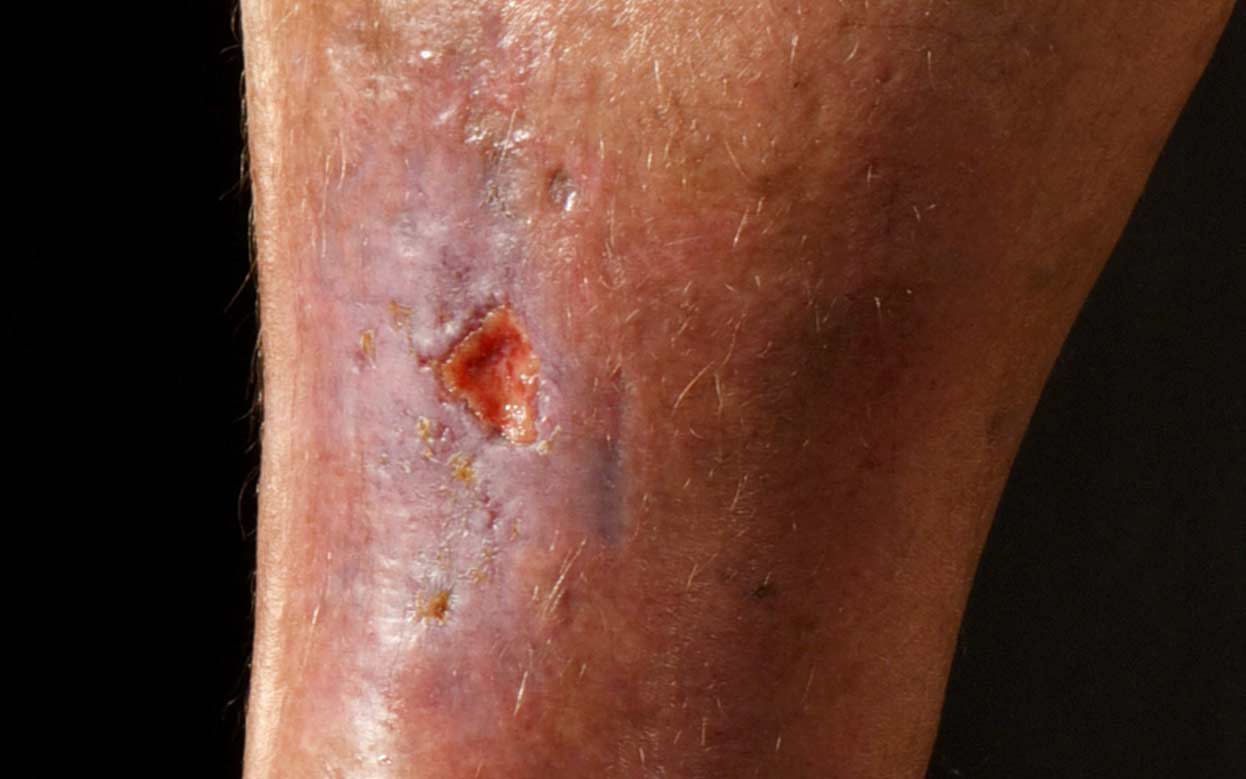
No.1 Always perform a thorough assessment
Ask about symptoms and how long the patient has had problems. Examine the lower legs. Most patients should have a Doppler ultrasound to calculate the ankle brachial pressure index (ABPI) to see if there are problems with blood supply to the lower leg. This test should be undertaken as early as possible but certainly within a few weeks of the patient’s first appointment.
No.2 Use compression to treat venous hypertension and lymphoedema
If the leg ulcer is because of poor venous return or lymphoedema and the patient has an adequate blood supply to their lower limb, graduated compression therapy is likely to be a very efficient healing method. It is best to think of compression in terms of dose. The recommended dose delivers 40mmHg at the ankle. Compression that delivers less than this will usually be less effective in promoting healing.
No.3 Always involve the patient when deciding on the best type of compression
If a patient’s wound is not too wet they may prefer compression hosiery to bandaging. But if their legs are tender, bandaging might be more comfortable. Including the patient in the decision-making increases the chance of them coping better with their compression therapy.
No.4 There is no such thing as a ‘magic bullet’
Optimal treatment for venous leg ulceration needs to be a combination of adequate compression and appropriate wound bed preparation. Patients with leg ulceration often have particularly sensitive/fragile skin so adhesives are best avoided if possible.
No.5 Tell patients to regularly wash their legs and feet and use moisturiser
It is important to maintain good hygiene of both the leg and foot (especially between the toes) to reduce the risk of infection. Regular use of bland moisturising creams and ointments will protect the skin and its elasticity.
No.6 Pain relief is very important
Most patients will find painkillers helpful, especially when they start compression. Usually, once the compression starts working and the swelling reduces, painkillers are often no longer needed.
No.7 Don’t mistake varicose eczema for infection (and treat the itch)
Venous insufficiency can cause varicose eczema, which presents as red inflammation and can look like an infection. Be careful to distinguish between the infection and eczema. Eczema will respond quickly to topical steroid creams or ointments. Once the eczema subsides, moisturise regularly with bland creams. If you are unsure whether the redness and inflammation is due to infection or varicose eczema (or a combination of both) seek the advice of your local tissue viability nurse.
No.8 Look out for the unusual
Most leg ulcers are due to venous insufficiency and should respond well to simple dressings and adequate compression. But some leg ulcers will be complicated by an inadequate arterial supply, and a proportion may be due to unusual conditions, such as skin cancers, or dermatological conditions, such as pyoderma gangrenosum. If unsure, refer to secondary care.
No.9 Remember to discuss any lifestyle issues
The best treatment is multi-faceted. Lifestyle changes, such as increased exercise, smoking cessation, maintaining a healthy weight and eating a healthy diet will all promote healing.
No.10 Make sure the patient understands why they have a problem with healing
Involving your patient in their care is more likely to get the results you both want. It is important that your patient understands why they are having problems with healing so they can work with you to help improve the health of their legs.
Tell us what you think
If there’s anything you want to ask us or tell us, whether it’s a suggestion about our website, a complaint, or a compliment, drop us a line at
support@legsmatter.org









